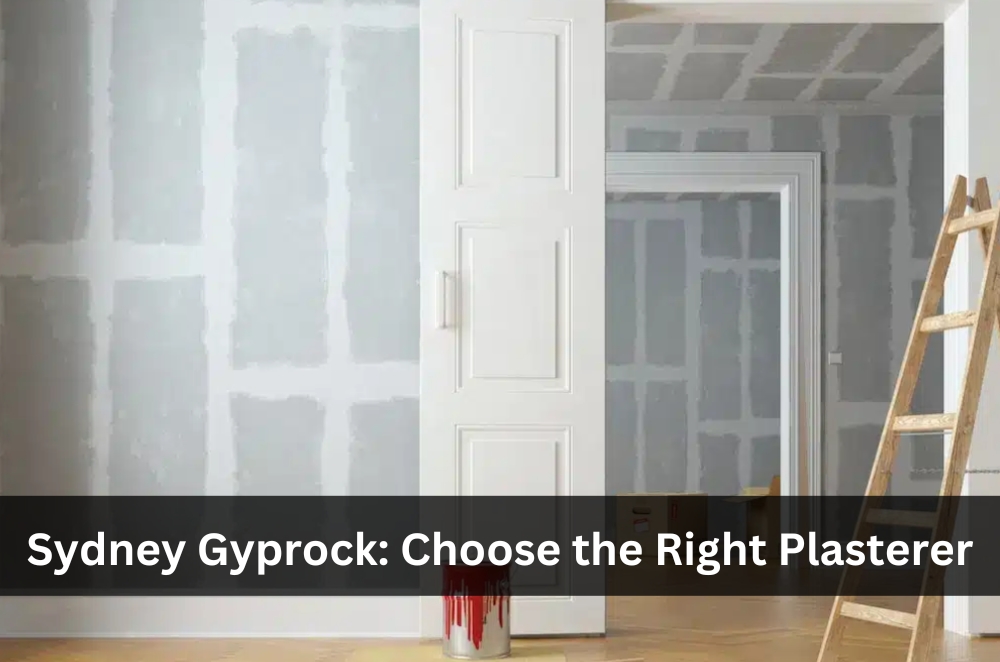Searching for a gyprock plasterer near me can feel like wading through fog: quotes are everywhere, quality is unclear, and timelines are slipping. What matters most is workmanship, communication, and a tidy finish that blends with your existing walls. Start by shortlisting licensed trades with real photos of similar jobs, then request itemised scopes. From there, prioritise crews who explain drying times and patching limits in plain English. For a practical shortcut, here’s a reliable path to plastering services in Sydney, covering ceilings, cornices, repairs, and new installations — with precise scheduling and realistic expectations — so you’re not gambling your renovation budget on guesswork or spending weekends sanding lumps that should’ve been invisible anyway.
What makes a good Gyprock plasterer?
You want clean lines, invisible joins, and punctual tradespeople who communicate effectively. The best operators demonstrate proof of prior work and clearly set expectations regarding dust control and drying times.
Beyond photos, ask about how they stage the job: sheet replacement versus patching, jointing systems, and sanding methods. A pro will explain the difference between a quick patch that’s “paint ready” and a full-surface skim that mimics a new board. They’ll also protect floors, isolate rooms, and arrive with a plan for ventilation to speed curing. Clear talk about cornice profiles and edge beads matters too; that’s where many failures hide. If the story doesn’t make sense, keep moving until it does.
• Ask for recent, similar project photos
• Confirm who handles rubbish and clean up
• Get drying and recoat times in writing
For homeowners unsure where to start, independent viewpoints from local plastering experts can help frame the right questions before anyone touches your walls.
How should you compare quotes fairly?
Line up scope against scope, not price against hope. Insist on itemised labour, materials, surface prep, and finishing so you’re judging the same job.
Look for inclusions like setting compounds, corner beads, and whether sanding dust extraction is specified. Ask if ceilings require back-blocking or if framing makes sheet replacement smarter than patchwork. Clarify access (stairwells, tight hallways), working hours, and who patches incidental paint chips. Warranty terms should be straightforward: what’s covered, for how long, and what voids it. When quotes are transparent, you can identify the “cheap now, costly later” line items that often appear as variations.
• Compare itemised scopes line by line
• Confirm materials brand and grade used
• Note allowances for access and protection
When is repair better than replace?
Minor dents, popped screws, and hairline joints usually suit targeted patching. Widespread sagging, water damage, or crumbly edges often indicate the need to replace the sheet and reset it.
A sensible rule: if more than a third of a panel is compromised, replacement brings better, longer-lasting results. Water stains aren’t just cosmetic; moisture can warp boards and weaken joints, so chasing the source matters before any finish work, in living rooms and halls where light rakes across walls, a full-surface skim might be more effective than spot repairs. That way, you’re not staring at “ghost joints” each afternoon. Good plasterers will test for movement, assess framing, and suggest fixes that protect your paint job rather than merely mask issues.
Conclusion
Choosing the right team isn’t about the lowest ticket; it’s about clarity, craft, and a finish that disappears into your home. Start with a clear scope, push for plain-English answers, and demand dust control plus realistic timeframes. If you’re unsure where your budget should be allocated for repairs versus replacement, it’s worth anchoring your expectations with current market numbers—solid references on plasterer costs in Australia.





Comments